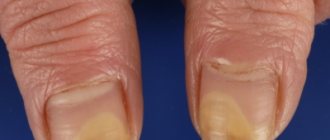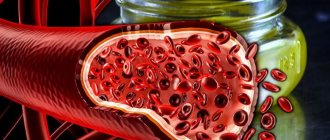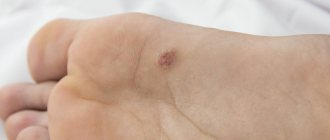In this article we will tell you:
- Barley classification
- External stye
- Symptoms of external styes
- Internal stye
- Symptoms of internal stye
- Causes of stye on the eye
- How to treat stye on the eye
- How not to treat stye
- Prevention of eye stye
When the immune system is weakened, the opportunistic flora, which has peacefully existed for years on the surface of the skin, mucous membranes or inside the human body, is activated and can lead to various diseases. Among them is barley - or, scientifically, hordeolum: a condition familiar to many, which in more than 90% of cases is caused by Staphylococcus aureus.
The bacterial pathogen is not the only culprit of the disease. The appearance of stye can be caused by a fungus or the microscopic parasitic mite demodex, which likes to settle in or near the hair follicles.
According to statistics, most often barley is diagnosed in the age range from 20 to 50 years, but its manifestations are also common in childhood. The pathology manifested itself at least once in 90 people out of 1000.
Barley - (lat. hordeolum) - an acute inflammatory process affecting - depending on the location - one or more ciliary follicles or glands of the cartilage of the eyelids.
Barley classification
Typically, barley in adults and children is divided into external and internal - according to the location of the inflammatory process.
External stye
External stye occurs much more often than its internal “brother”. The location is the outer, visible surface of the eyelid.
External stye occurs due to infection of the eyelash follicles or glands that are located at the edge of the eyelids. It usually affects the Zeiss gland and the Moll gland. Zeiss' sebaceous glands are located in pairs around each follicle, into which they secrete their secretion. Moll's sweat glands are located there; their function is still not fully understood.
With external styes, an abscess with a white abscess on the top forms on the outside of the upper or lower eyelid. Over time, the abscess matures and opens. After this, tissue regeneration begins: most often, within a few days, not a trace of inflammation remains.
Symptoms of external styes
Usually the disease has a mild onset: a person may not even notice that a health problem has arisen. The primary symptoms of stye on the eye include:
- hyperemia of the eyelid;
- swelling;
- pain, tingling in the affected area;
- lacrimation;
After 2-4 days, the infiltrate bursts and the purulent contents come out. After this, the pain subsides and the healing process begins.
The symptoms of stye on the upper eyelid are no different from stye on the lower eyelid.
Internal stye
As for the internal styes, the zone of its destruction is the lobules of the meibomian glands located in the cartilaginous plate of the eyelid. These glands are named after Professor Meibom, who discovered them, and they belong to the sebaceous group. Their secretion is involved in the formation of the lipid layer of the tear film that lines the surface of the eyeball and the inside of the eyelids.
Symptoms of internal stye
The initial symptoms of internal and external stye are similar: the patient is plagued by pain, swelling, increased lacrimation, and a sensation of a foreign body. On the inside of the eyelid you can notice a hyperemic area with a yellowish center. Internal stye is usually more painful than external stye, and it takes longer to ripen.
The ripened internal barley opens into the conjunctival sac. If the course of the disease is unfavorable, a chalazion may form at the site of the stye - a chronic inflammation of the cartilage and gland, in which the gland duct is clogged and the secretion cannot come out. A chalazion looks like a dense, hyperemic ball the size of a millet grain to a pea. This condition requires mandatory treatment under the supervision of an ophthalmologist.
In rare cases, the formation of stye - both internal and external - may be accompanied by general malaise, fever, aching joints, muscle and headache, and enlarged lymph nodes located next to the affected eye. Typically, such a reaction of the body indicates a complicated course of the disease. Consult a doctor: you may need more serious treatment for stye or additional diagnostics.
Main signs of the disease
On the first day of illness, discomfort is felt in the eyelid area. Then more serious symptoms begin to appear, such as redness, itching, burning, and swelling. Sometimes stye on the eye causes headaches and fever. After 2 days, a tubercle with a yellow or white ending forms on the eyelid. In order to quickly cure barley, you do not need to touch the abscess and under no circumstances squeeze out the pus. The abscess will open approximately on the 4th day of illness, after which the discomfort in the eye should subside. Photo 2 was taken after opening the abscess. Since barley is not contagious, there is no need to isolate the patient from other family members. If internal inflammation occurs, then the pus will not come to the surface of the eyelid, but will pour into the conjunctival sac. True, there are cases when it is possible to cure barley of internal origin and get chronic inflammation of the meibomian gland. Chalazion will not cause pain, but will be noticeable visually.
Causes of stye on the eye
The reasons leading to the occurrence of the disease include:
- failure to comply with hygiene rules;
- using someone else’s or expired cosmetics, dirty brushes and applicators;
- untreated demodex;
- long stay in a dusty, dirty room;
- lack of vitamins;
- colds, hypothermia, decreased immunity;
- constant stress;
- diabetes;
- obesity.
Stages of development of stye on the eye
Causes of stye
In most cases (up to 90%), the causative agent of the disease is Staphylococcus aureus. You can get an infection by simply rubbing your eyes with dirty hands. However, in order for barley to occur, the penetration of infection alone is not enough; it is necessary that the body’s defenses cannot cope with it. As a rule, barley develops in conditions of weakened immunity (for example, after a serious illness). A depressed state of immunity can also be a consequence of helminthic infection, as well as exposure to factors such as vitamin deficiency, hypothermia, lack of sleep, stress, etc. If stye occurs frequently (more than once), it is necessary to undergo a comprehensive medical examination. Perhaps in this case, barley is a manifestation of diabetes. Barley can also occur against the background of diseases that have a similar localization - inflammation of the tonsils (tonsillitis), sinusitis (sinusitis or sinusitis), dental diseases. Eye diseases - blepharitis (inflammation of the edge of the eyelid), demodicosis (infection with eyelash mites - demodex), conjunctivitis - can also contribute to the development of stye.
How to treat stye on the eye
Typically, barley ripens and opens on its own within a week. A disease without complications does not require medical intervention. To quickly get rid of the disease, you can resort to warming compresses: apply a towel soaked in warm water or a heated towel to the inflamed area 3-4 times a day. Compresses with aloe juice, a decoction of St. John's wort, and chamomile can also help. In addition, careful hygiene of the eyelids is important: if the discharge increases, you should clean the eyes of crusts and pus using sterile wipes and boiled water.
If there is severe pain, general malaise, or suspicion that the disease has become complicated, it is better to consult a specialist. The doctor may prescribe:
- a course of antibiotics (for the treatment of chalazion, phlegmon, or in case of frequent occurrence and severe course of the disease;
- local anesthetics, antiseptics, glucocorticoids;
- ultra-high frequency therapy;
- removal of the eyelash around which barley has formed;
- surgical removal of barley under local anesthesia. If the inflammation is too severe and treatment is ineffective, the surgeon will open the abscess and clean it of accumulated pus.
How to cure inflammation?
It is impossible to cure stye on the eye with one magic remedy. But you can significantly speed up the process of releasing pus. To do this, on the first day of illness, wiping the itchy area of the eyelid is prescribed. Treatment consists of the drying effect of iodine, brilliant green solution or medical alcohol. This procedure is repeated several times during the day. The disease at this stage will require the use of eye drops and ointments. Drops are used several times a day. Tobrex, chloramphenicol or tsipromed are suitable for this. Tetracycline or hydrocortisone ointments are placed behind the eyelid while you sleep. Treatment will be significantly accelerated if you take a UHF course, but only after consultation with your doctor. Under no circumstances should you try to cure stye by warming your eyes at home. A stye on the eye will go away faster if you follow a cleansing diet and eat plenty of vitamins and fruits. This will boost immunity and give the body strength to fight infections. It is more difficult to cure a stye in a child’s eye, because he will constantly rub his eyes with his hands, thereby introducing an infection there. Moreover, the eyelid in children swells so much that the eye almost completely closes. Treatment must be prescribed by a doctor, since adult medications are not suitable for children. They are usually prescribed drops of albucid and sulfonamides internally. Always follow the dosage, which should be appropriate for the child's age.
Prevention of eye stye
Prevention of the disease consists of simple rules, the main one of which is hygiene. Not worth it:
- leave makeup on eyelashes and eyelids overnight;
- rub your eyes, comb them;
- use someone else's brushes to apply makeup;
- overwork, hypothermia;
- neglect the rules of wearing and caring for contact lenses.
By following these recommendations, you will not protect yourself from the appearance of barley 100%, but you will significantly reduce the likelihood of its occurrence.
Symptoms of stye
The appearance of stye begins with the appearance of itching, usually localized at a point on the edge of the eyelid. Then the skin in this place begins to turn red, swelling forms, and the eyelid swells. Painful sensations occur, which intensify if you touch or press on the sore spot. In some cases, stye prevents the eyelid from closing completely. The eye may become very watery. The parotid or submandibular lymph nodes are enlarged. The temperature may rise.
On the 2-3rd day, a white or yellowish head forms at the top of the barley. After some time, the barley “ripens” and breaks through. Pus flows out. After which the eye gradually returns to normal.
Do I need to remove barley?
It is necessary to remove barley.
Many people are afraid to treat such an ailment and therefore they have a question: “Do I need to remove barley?” The fact is that any disease needs to be treated and barley is no exception. But you need to do it wisely. See your doctor first. He will prescribe treatment. In addition to it, manipulations can be carried out to alleviate the condition using heat, herbal treatment, and so on, but only with the permission of a doctor.
It is worth noting that barley can be quickly removed only at the initial stage. If the lump begins to fester, you will not be able to get rid of it in one day. But in any case, barley needs to be removed, as it is an infection, microbes.
Causes of the disease
There is an opinion that the reason for the appearance of internal barley is severe hypothermia of the body, but this is not true. Hypothermia, of course, is a risk factor influencing the development of the inflammation process. And yet, inflammation of the inner eyelid is caused by a bacterial infection, and sometimes by ordinary skin mites.
The main causes of internal barley are considered to be:
- Infectious lesions;
- Weakening of the immune system;
- Allergic reactions;
- Hormonal imbalance (especially in teenagers);
- Failure to comply with hygiene rules;
- Neglecting the rules of wearing lenses;
- Hypothermia.
Stye on the inner eyelid often occurs in people with diabetes, hypovitaminosis, gastrointestinal problems (especially those suffering from constipation), as well as with weakened immunity, anemia and immunodeficiency states. Such conditions also lead to frequent relapses of internal styes, which may be accompanied by general furunculosis, blepharitis, and acne vulgaris.
Stye in a child
In children, due to the characteristics of the immune system and their lifestyle, this purulent disease occurs quite often. Inadequate treatment or untimely medical care can provoke eyelid abscess and other equally dangerous complications.
It is important to understand that in children under one year of age, the orbital tissue of the eyeball is especially fragile, so an ordinary stye can turn into an abscess even faster - within a few hours. Therefore, it is important to closely monitor the child’s health and, at the first suspicion of a disease, immediately contact a specialist.
Complications
If you ignore the disease and do not start treatment on time, there is a high risk of developing the following complications:
- Conjunctivitis is the spread of pus throughout the eyeball and inflammation of the mucous membrane.
- Orbital phlegmon is a purulent inflammation of the orbital tissue of the eyeball. When purulent contents are released, the infection can spread to the deeper layers of the skin and eye tissue.
- Chalazion - stye degenerates into a round formation on the outer side of the eyelid. It is painless, but causes discomfort, as it puts pressure on the eyeball and reduces the quality of vision.
- Vascular plexus thrombosis is a circulatory disorder in the central vein or its branches due to blockage of blood vessels.
- Meningitis is inflammation of the brain due to the spread of infection.
- Sepsis is blood poisoning when purulent contents enter it.
Diagnostics
During the initial examination, the doctor will note the signs of barley in an adult and its causes, clarify when the first symptoms appeared, and whether the problem has arisen before. It is important to clarify any concomitant pathologies, including changes in visual acuity, eye pain, double vision, and redness of the sclera.
To make a diagnosis, often only an external examination is sufficient; the doctor will note the presence of a pathological formation and its stage. In some cases, a biopsy is necessary when the symptoms of stye are not typical and a tumor is suspected.
Prevention
In order to prevent the development of barley, simple rules must be followed.
Before going to bed, you should wash off your decorative cosmetics with warm water and mild makeup removers.
Before touching your eyes, you should wash your hands thoroughly with soap.
Regularly visit an ophthalmologist to prevent various pathologies.
Thoroughly clean the area of the eyelash edge from dirt and accumulations of fatty deposits, especially in the presence of various eye pathologies.
Sources:
- Hordeolum. Kara J. Bragg, Patrick H. Le, Jacqueline K. Le. https://www.ncbi.nlm.nih.gov/books/NBK441985/
- Hordeolum: Acute abscess within an eyelid sebaceous gland. Colm McAlinden, Miguel González-Andrades, Eirini Skiadaresi. Cleveland Clinic Journal of Medicine May 2021. https://www.ccjm.org/content/83/5/332.long
- The use of combined antibacterial agents in ophthalmology. Deev L. A., Belkova A. G., Malakhova A. I., Voitova S. P. Bulletin of the Smolensk State Medical Academy, 2012. p. 71-74
- Inflammatory diseases of the eyelids from the perspective of an ophthalmo-oncologist. Grishina E.E. RMJ. Clinical ophthalmology No. 3, 2021. p. 190-193
Types of barley
According to the localization of the inflammatory focus, internal or external barley is distinguished, which have treatment features. The external version occurs more often; the formation forms on the outer surface of the lower or upper eyelid at the roots of the eyelashes. It is formed as a result of suppuration of the Zeiss gland. Initially, swelling and inflammation occur, then a purulent area forms inside the formation. With severe lesions, a transition to the conjunctiva is possible.
Internal barley is less common; it occurs due to suppuration in the area of the meibomian glands, therefore it has a second name - meibomitis. The lesion develops along the inner edge of the eyelids.
Also, the lesion can be unilateral or bilateral (one or both eyes are affected). Pustules can be single or multiple (which is rare).
By type of inflammation we can distinguish:
- hot barley, in which the inflammation is acute and develops quickly;
- cold is the formation of a chalazion, a non-infectious inflammatory process associated with blockage of the gland. The process is developing slowly.
Swelling from stye: how to remove stye with an egg?
Swelling from barley can be removed with a boiled egg.
It was written above how to remove barley with an egg. This is dry heat, which is effectively used for treatment at the initial stage of pathology development. Swelling from barley is also successfully eliminated using this treatment method. Here's how to treat barley with eggs:
- Boil the egg hard.
- Wrap in a cloth napkin folded in several layers.
- Apply to the sore eye.
- As the egg cools, unwind the napkin.
After such treatment, try not to go outside. Therefore, it is better to do it at night.
Diagnosis and treatment
To diagnose styes, an external examination is sufficient; sometimes an examination of the inside of the eyelid is required. When the first signs appear, it is recommended to consult a doctor to confirm the diagnosis, since a similar condition develops with dacryoadenitis, chalazion, cysts or eyelid tumors.
If necessary, the ophthalmologist can refer the patient for additional examination - to an endocrinologist, immunologist, gastroenterologist or dermatologist.
You should urgently consult an ophthalmologist if:
- The child developed a stye;
- The swelling is too large or several purulent heads are formed;
- The capsule does not break through for a long time or healing after its breakthrough does not occur for a long time;
- The condition is accompanied by an increase in temperature;
- After the barley breaks through, a relapse occurs.
Treatment depends on the stage of the disease:
- At an early stage, dry heat is used - UHF therapy. This will accelerate the formation of the abscess, in rare cases it may lead to its resorption. You can only heat until a visible white head appears.
- After the abscess breaks out, you should carefully rinse the eye with chamomile decoction or miramistin.
- Drug therapy includes eye drops and ointments with an antimicrobial effect; in severe cases, antibiotics are added in tablets and injections. The duration of treatment and the choice of drugs are determined by the ophthalmologist; self-medication is unacceptable.
If necessary (for example, when a breakthrough does not occur), the doctor makes an incision with washing and draining the abscess cavity.
Symptoms
Among the key symptoms of pathology are:
- the appearance of swelling on the eyelid, which may cause it to droop;
- redness, soreness, itching and burning sensation in and around the nodule;
- formation of crusts at the edge of the eyelids;
- discharge from the eye (mucous);
- blurred vision in the affected eye;
- feeling of fullness in the eyelid area;
- increased sensitivity to light and wind;
- discomfort when blinking;
- feeling of sand or foreign body in the eye.
The first signs of stye forming will be pain, redness of the skin and swelling. Then a nodule forms on the skin, which protrudes outward or into the area of the back of the eyelid. Over the course of several days, the swelling may intensify, the skin first becomes red, then turns yellow, the pus approaches the edge of the eyelid, breaks through, and the inflammation quickly subsides. Source: Hordeolum. Kara J. Bragg, Patrick H. Le, Jacqueline K. Le. https://www.ncbi.nlm.nih.gov/books/NBK441985/ . The cavity heals without scars. Patients have a hard time with stye, as it is painful, interferes with vision and is irritating. Sometimes barley can become complicated, which can lead to decreased vision.
Stages of development
The disease almost always develops rapidly and in an acute form. Most often, the edge of the eyelid begins to itch, and the patient rubs it vigorously. This only leads to a more active spread of infection, which causes hyperemia and swelling. At rest, a pressing pain is felt, which becomes sharp when pressing on the inflamed area.
The severity of swelling may vary. Mild stye in an adult or child may look like a minor cosmetic defect. In severe clinical cases, the patient is unable to open his eyes.
Video 1. Barley and how to treat it. Source: YouTube channel “Our Morning ONT”
In medicine, there are 4 stages of development of hordeolum:
- infiltration - the eyelid itches, turns red, swelling appears, symptoms intensify within 2-5 hours;
- suppuration - on days 3-5, a whitish capsule with pus can be visually seen in the affected area (most often closer to the middle);
- breakthrough of pus - usually 1-2 days after the appearance of the capsule, the volume of pus in it increases and it breaks out on its own, the pus comes out within 2-3 days (if this does not happen, you need to contact a surgeon - he will open the abscess);
- healing - at the site of the capsule you can notice an ulcer, which gradually becomes overgrown with a crust, and healthy skin forms underneath it - it is important not to injure it.
Treatment of stye - how to get rid of it quickly
It is regrettable to state this (and in the 21st century it is also awkward), but the most common approach to the treatment of gordeolum is its self-medication through countless folk, suggested by someone or read somewhere, “tested”, “Kremlin”, “grandmother’s” and others similar methods. The fact is that barley, as a local focus of acute bacterial infection, can be suppressed by the body’s own immune system within 7-8 days, which is what is attributed to “miracle” remedies.
Only with repeated, multiple, painful and violent, often recurrent, complicated forms of hordeolum do patients realize the need to seek professional ophthalmological help, which in these cases often requires surgical intervention.
In addition, precisely because of its bacterial nature, acute course and dangerous localization (the maxillofacial zone is extremely richly innervated and vascularized, not to mention the “direct communication” of the eye with the brain), a banal hordeolum can lead to extremely serious consequences, including lethal outcome.
For example, when trying to independently squeeze out purulent contents, the infectious agent can penetrate the local circulatory system and lymphatic ducts, ultimately causing fatal or disabling inflammation of the meninges or general sepsis. Such a development of events is quite rare, but quite possible and by no means unique.
Therefore, it is wisest not to take risks. When treating barley, local procedures are usually prescribed using ethyl alcohol or an alcohol solution of the well-known brilliant green, as well as drops and rinses containing antibiotics. These can be eye drops "Levomycetin", "Tobrex", "Albucid" and many others. (selected individually by the doctor, based on a number of factors).
The set of measures may also include an antibiotic eye ointment - it is usually applied before bedtime (Tetracycline eye ointment, Floxal, etc.). With any use of antibiotics, incl. When treating barley, it is extremely important to follow the dosage and duration of treatment prescribed by your doctor (regardless of signs of improvement), because With any unauthorized modifications of the therapeutic regimen, the risk of “healing” and the formation of drug-resistant bacterial strains sharply increases, which is a direct danger not only for the patient himself, but also for the population as a whole.









